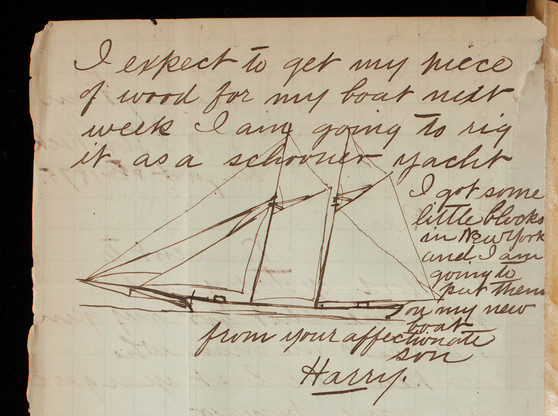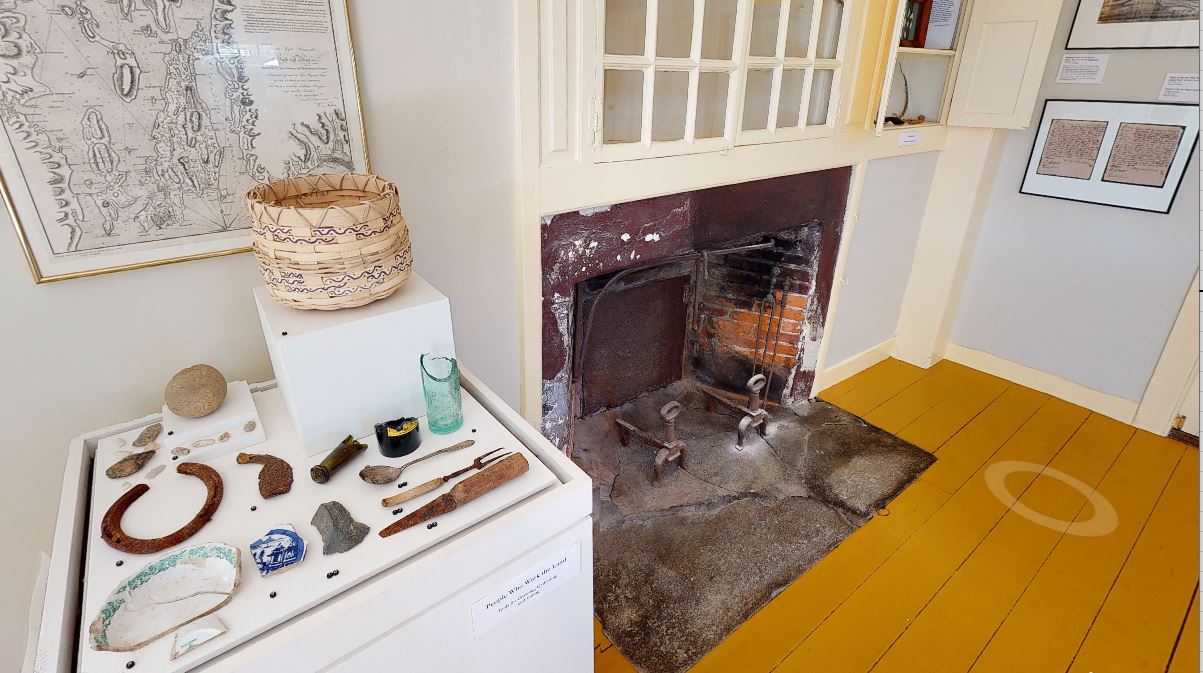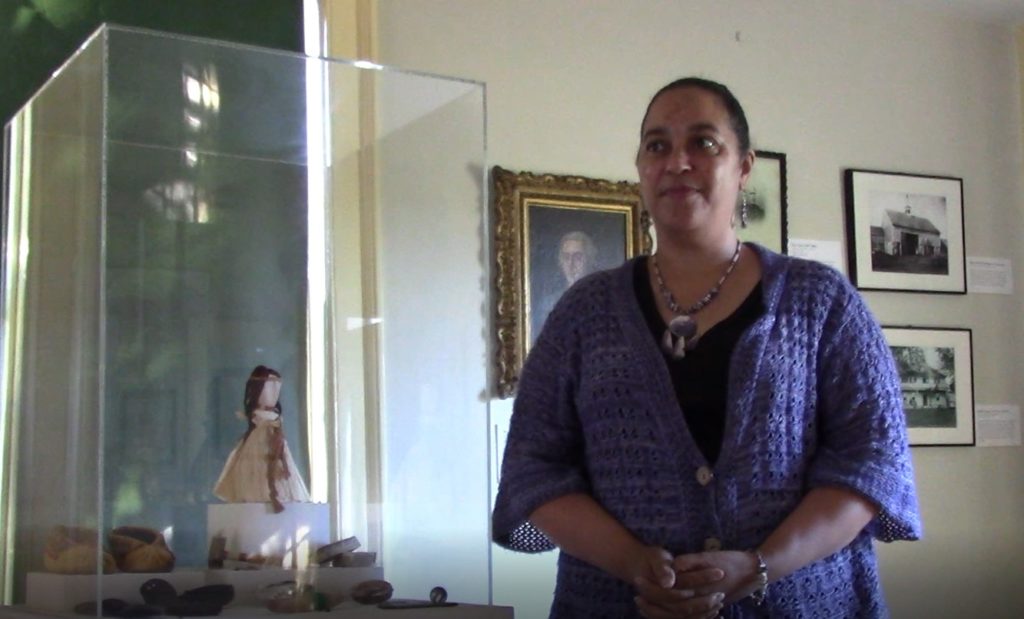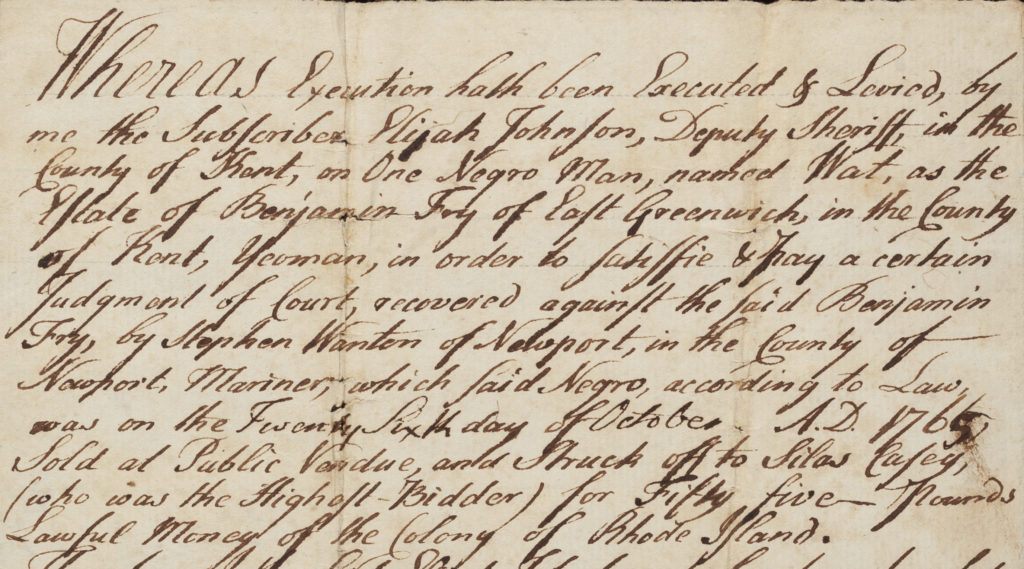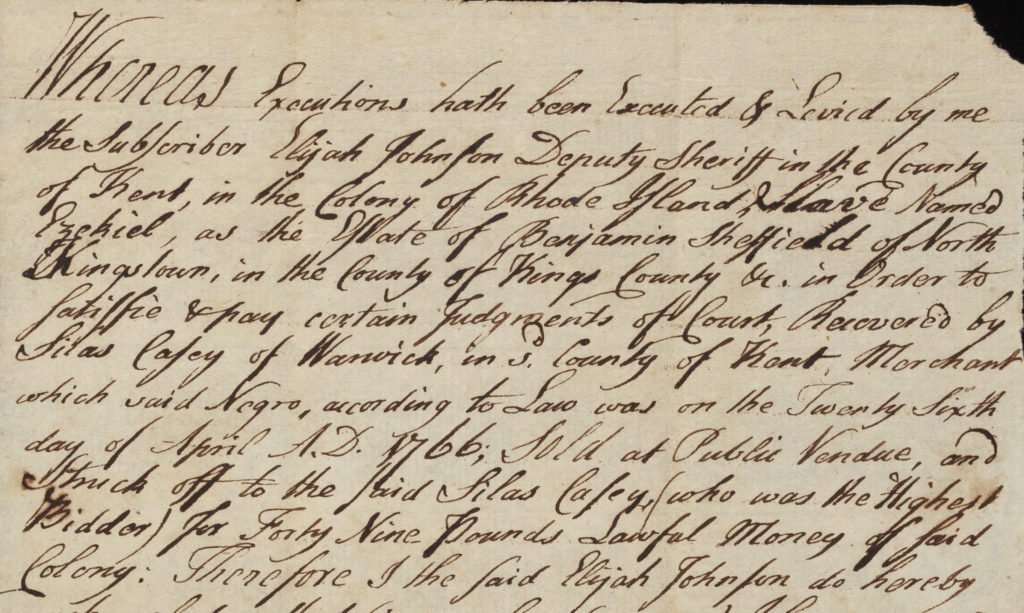 Casey Farm
Casey Farm
Casey Farm House Museum Gallery
AND BEYONDThe farm house’s museum gallery room was lived in by the first owners of the house, the Coggeshalls, 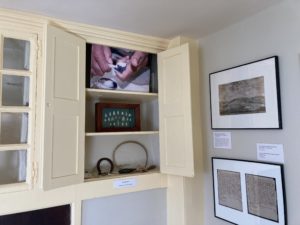 as their second-best parlor and later by their Casey descendants as a dining room. The comfortably-sized room has two windows and a fireplace with built-in cabinets. When the Casey family donated the property as a museum, they also donated family heirlooms that are today stored for their preservation in our Haverhill Center for Preservation and Collections, but you can see them today in this virtual gallery.
as their second-best parlor and later by their Casey descendants as a dining room. The comfortably-sized room has two windows and a fireplace with built-in cabinets. When the Casey family donated the property as a museum, they also donated family heirlooms that are today stored for their preservation in our Haverhill Center for Preservation and Collections, but you can see them today in this virtual gallery.
We are able to go beyond the gallery in many ways. Read about the unique culture of the early colonial “Narragansett Planters”–people of European descent who settled in the homeland of the Indigenous Narragansett people–and contrast that with its economic underpinnings in the labor of enslaved people. Hear from Lorén Spears, Executive Director of the Tomaquag Museum, about the partnership between our two organizations and the commissioned works added to the gallery. And, don’t miss the chance to explore the Museum Gallery and even a whole lot of the 300 acres the Casey family donated in the 360-degree panorama!
See Casey Farm in 360 Degrees
Click the PLAY button to begin your visit. Start exploring by clicking in the direction you want to go or skip around by clicking on the circles on the ground. To look around a space, simply click, hold, and drag in any direction. Click the 360° badge to explore spaces outdoors, including the garden and bay.
Navigate quickly between areas using the icons found in the lower left corner.
Family Portraits
Life at Casey Farm and Beyond
Partnership between Museums
by Lorén M. Spears, Executive Director, Tomaquag MuseumA Revolutionary Memento
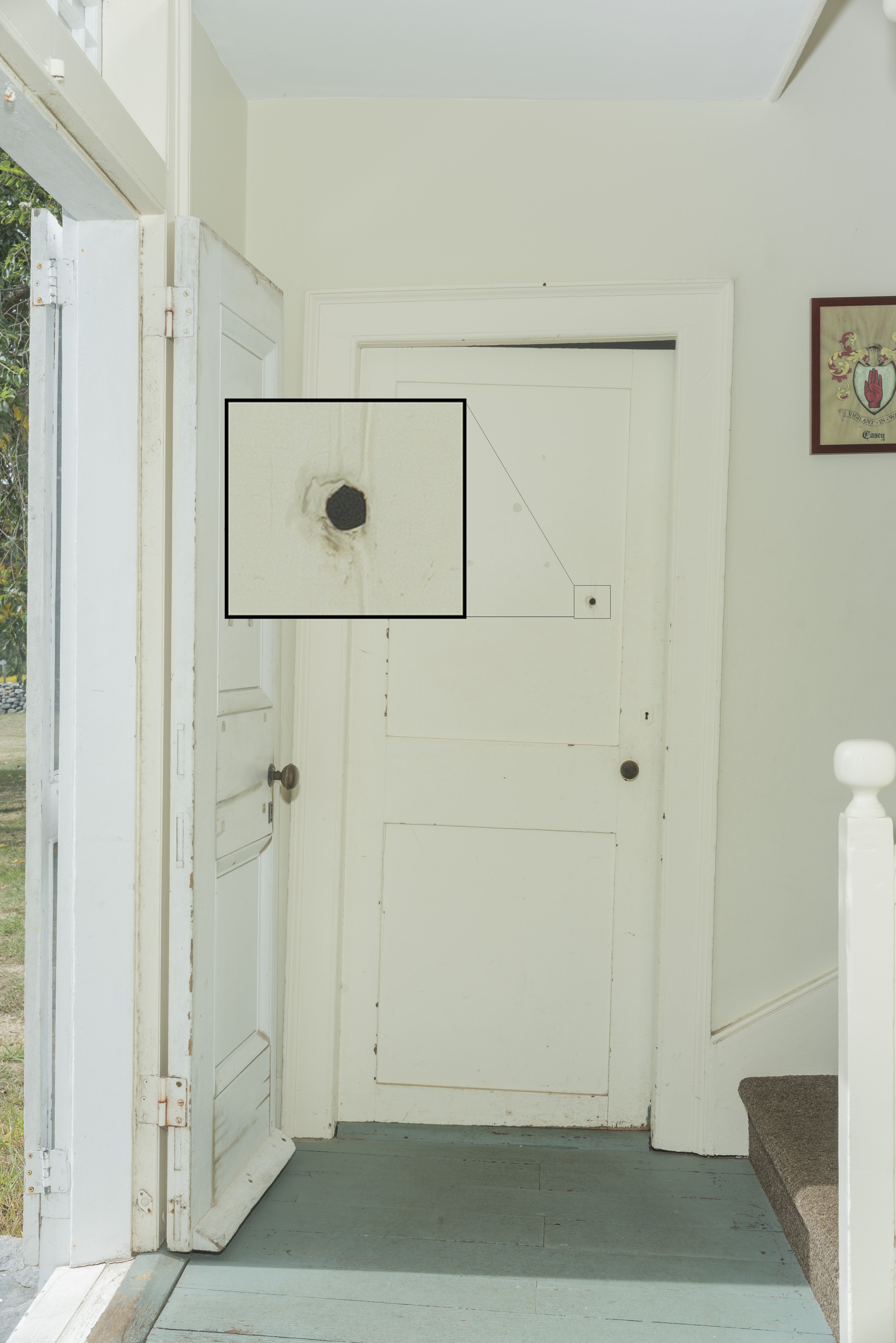
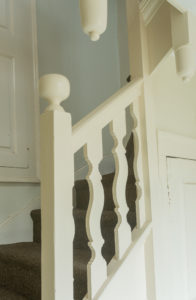 The front stairhall is modest in size, typical of central-chimney houses whose staircases are built alongside the chimney mass. Shaped balusters and drops decorate the space.
The front stairhall is modest in size, typical of central-chimney houses whose staircases are built alongside the chimney mass. Shaped balusters and drops decorate the space.
One of the stories that people remember the most about Casey Farm happened in the front hall during the Revolutionary War. In 1777, during the years that the British occupied Newport, a company of militia under Lieutenant Stephen Wightman had the assignment to scout the shores and was quartered for the night at Casey Farm. On August 5, they were spotted by British marines said to be from the Frigate Vulture who were blockading the west channel of Narragansett Bay. Thomas Lincoln Casey in his 1881 history of the farm tells how the British attacked: “The marines fairly riddled the house with bullets, firing through the windows, the doors, and under the doors, and to this day the marks of their attack can be seen.”
Several militia men were captured by the British, yet most patriots escaped. One veteran later applied for a pension because he had been shot in the arm, which is one way we know about this incident. The Caseys had most of the bullet holes repaired. “One hole, however, has been left as a memento of the assault” wrote Thomas Lincoln Casey, and visitors to the farm can see it today in the best parlor door leading to the front hall.
Wat and Ezekiel
enslaved African AmericansThe papers of Silas Casey (1731-1814) held two important clues toward uncovering the lives of two enslaved African American people, Wat and Ezekiel. Because Silas Casey also owned land in nearby East Greenwich, we have no direct evidence that these men lived at Casey Farm, but they were bonded to the Casey family. Scholar Christy Clark-Pujara in her book Dark Work: The Business of Slavery in Rhode Island gives us some insight into the culture of the Narragansett Planters and their reliance on people like Wat and Ezekiel:
Farmers began moving to the Narragansett Country in the 1690s and would soon amass their wealth from large stock and dairy farms worked by bonded laborers. They initially relied on indentured Native Americans but replaced them with enslaved Africans. By the 1730s, the Narragansett Country was home to between twenty to thirty settler families and their bonds people. African slaves had slowly been brought into the Narragansett from the West Indies starting around 1700, and by 1740 the Narragansett Country had the highest concentration of enslaved people in the colony, many of whom came directly from Africa. By 1755, one out of every three residents was enslaved.
(pages 26-27)
Below, you can read their deeds of purchase in either 1760s script or the transcriptions. You can also try to read between the lines to find something about the lives of people who, against their will, did so much to build up Rhode Island.
You can find a more complete account of the history of enslaved people associated with Casey Farm at the Rhode Island Slave History Medallion project’s website: https://rishm.org/washington-county/north-kingstown/casey-farm/. Our RISHM marker is dedicated to Wat, Ezekiel, and all of the enslaved people bonded to the Morey/Coggeshall/Casey family, along with numerous unnamed and unrecorded people who worked these lands.
Deed of sale for “One Negro Man, named Wat” to Silas Casey
Transcription:
Whereas execution hath been executed and levied, by me the Subscriber Elijah Johnson, Deputy Sheriff, in the County of Kent, on one Negro man, named Wat, as the estate of Benjamin Fry of East Greenwich in the County of Kent, Yeoman, in order to satisfie and pay a certain judgment of Court, recovered against the said Benjamin Fry, by Stephen Wanton of Newport, in the County of Newport, Mariner, which said Negro, according to Law, was on the Twenty Sixth day of October A.D. 1765 sold at public vendue, and struck off to Silas Casey, (who was the highest bidder) for Fifty Five Pounds lawful money of the Colony of Rhode Island. Therefore I the said Elijah Johnson, do hereby acknowledge that (in my said capacity) I have received of the said Silas Casey the paid sum of Fifty Five Pounds in like lawful money as abovesaid, to and for the use above mentioned; which is in full for said Negro as he was sold as aforesaid. As witness my hand and seal, this Twenty Sixth day of October Anno Dom. 1765.
Elijah Johnson: D: Srif
Witnesses
Spencer
test
Edmond Andrews
Deed of sale for “Slave named Ezekiel” to Silas Casey
Transcription:
Whereas executions hath been executed and levied by me the Subscriber Elijah Johnson Deputy Sheriff in the County of Kent, in the colony of Rhode Island, slave named Ezekiel, as the estate of Benjamin Sheffield of North Kingstown, in the County of Kings County Oc. in order to satisfie and pay certain judgments of Court, recovered by Silas Casey of Warwick, in So. County of Kent, Merchant, which said Negro, according to Law was on the Twenty Sixth day of April A.D. 1766; sold at public vendue, and struck off to the said Silas Casey, (who was the highest bidder) for Forty Nine Pounds lawful money of said Colony. Therefore I the said Elijah Johnson do hereby acknowledge that (in my said capacity) I have received of the said Silas Casey the said sum of Forty Nine Pounds in like lawful money as afores. to and for the use above mentioned, which is in full for the said Negro as he was sold as abovesaid. As Witness my hand and seal, dated the Twenty Sixth day of April Anno Domini 1766.
Elijah Johnson D Srif
Witnesses
Spencer
test
Edmond Andrews
Drawing on the Door
Many people miss until it is pointed out that the closet door in the room has a drawing of a ship incised in it! When the room was repainted in the 1990s, the painters discovered it and stripped the rest of the paint off to reveal the image. Because of the naughtiness of drawing on the door and the short stature of the artist, it must have been a child who drew what he or she saw all the time not far away on Narragansett Bay.
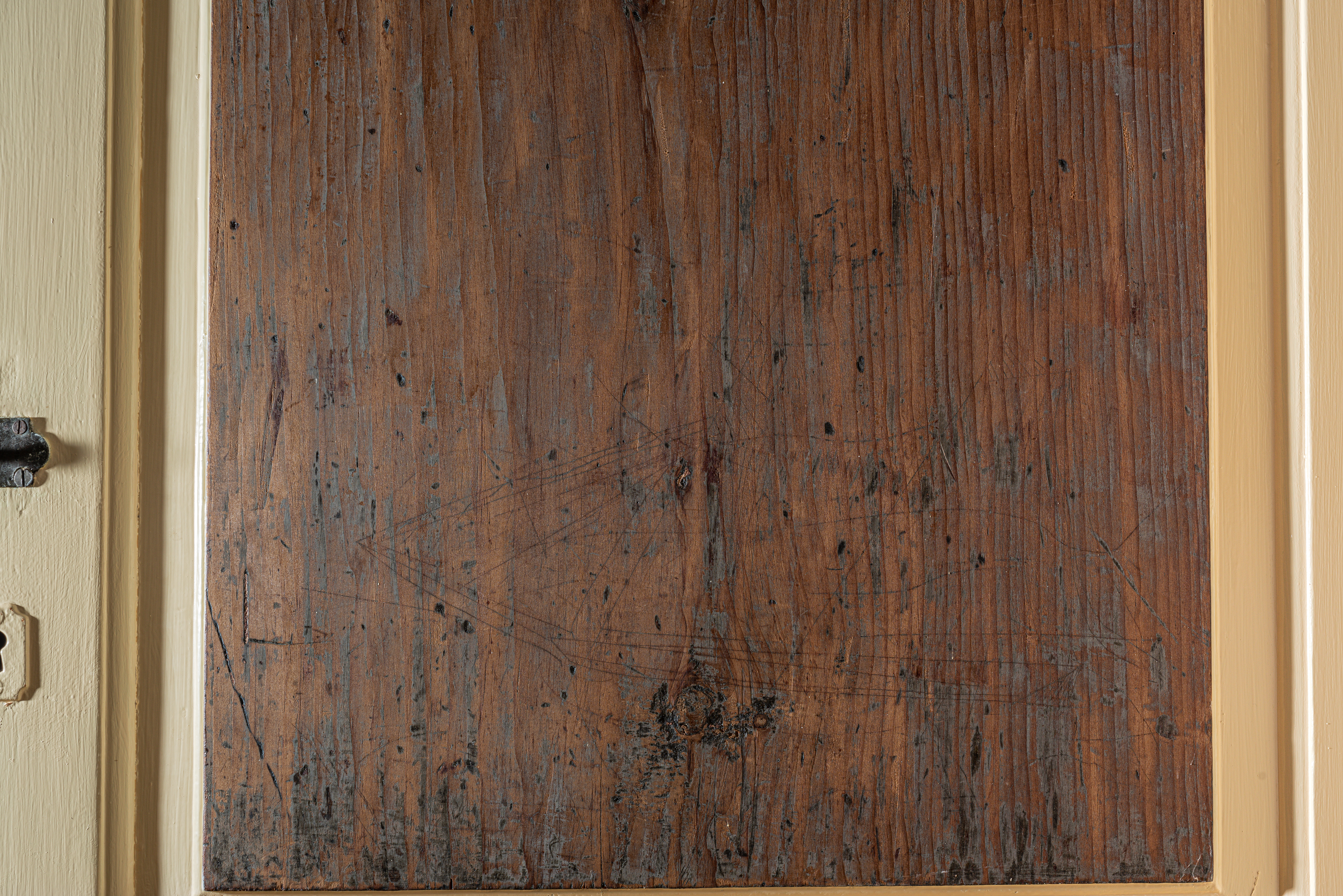 One Casey child who enjoyed drawing ships was Harry Weir Casey (1861-1880), who eventually attended school to become an engineer. Here is a page from a letter he wrote to his father, Thomas Lincoln Casey, when Harry was fourteen about a model ship he planned to build. Do you detect any similarities to the drawing on the door?
One Casey child who enjoyed drawing ships was Harry Weir Casey (1861-1880), who eventually attended school to become an engineer. Here is a page from a letter he wrote to his father, Thomas Lincoln Casey, when Harry was fourteen about a model ship he planned to build. Do you detect any similarities to the drawing on the door?
